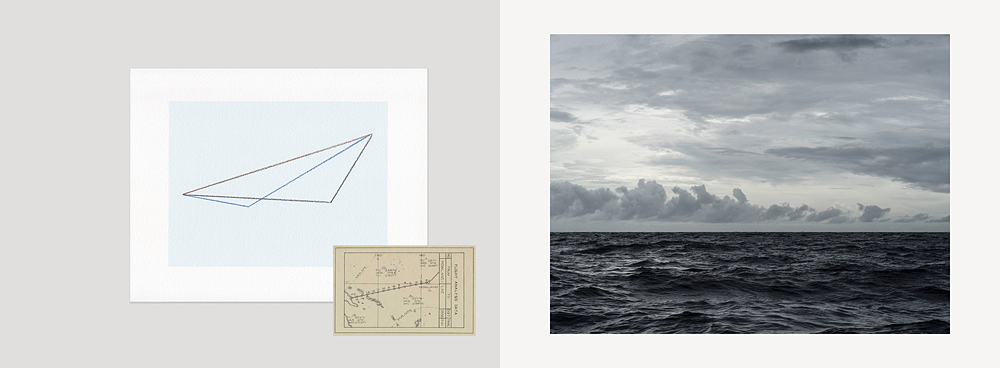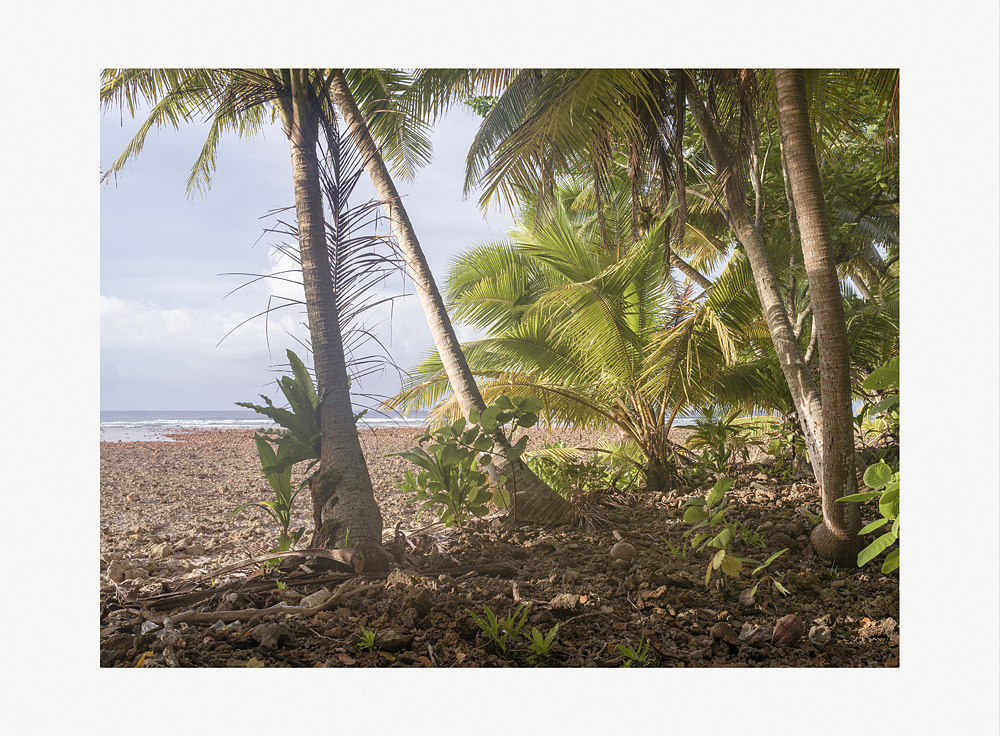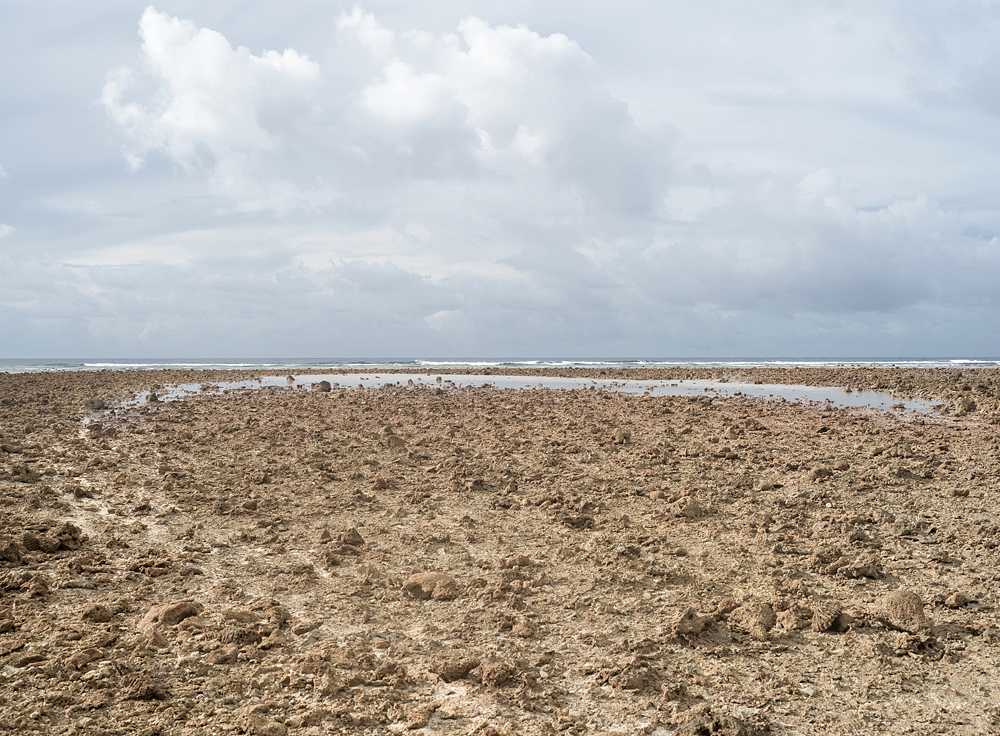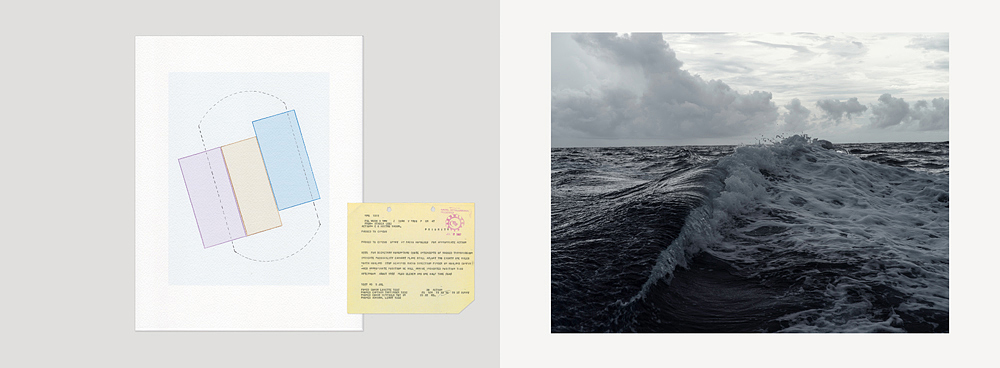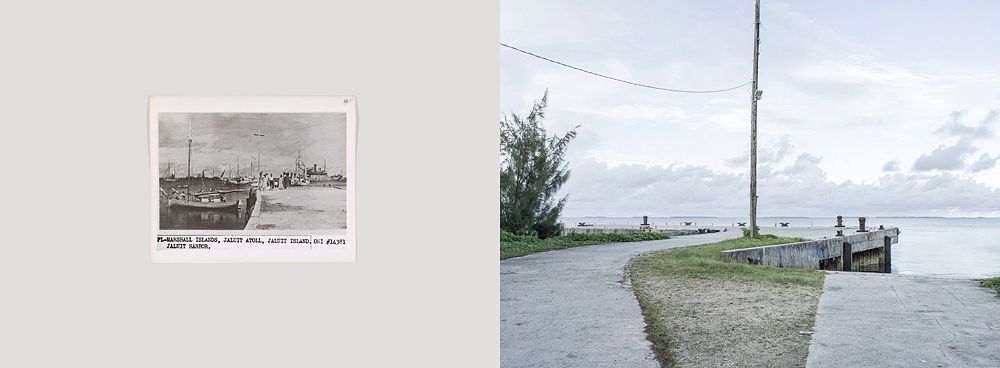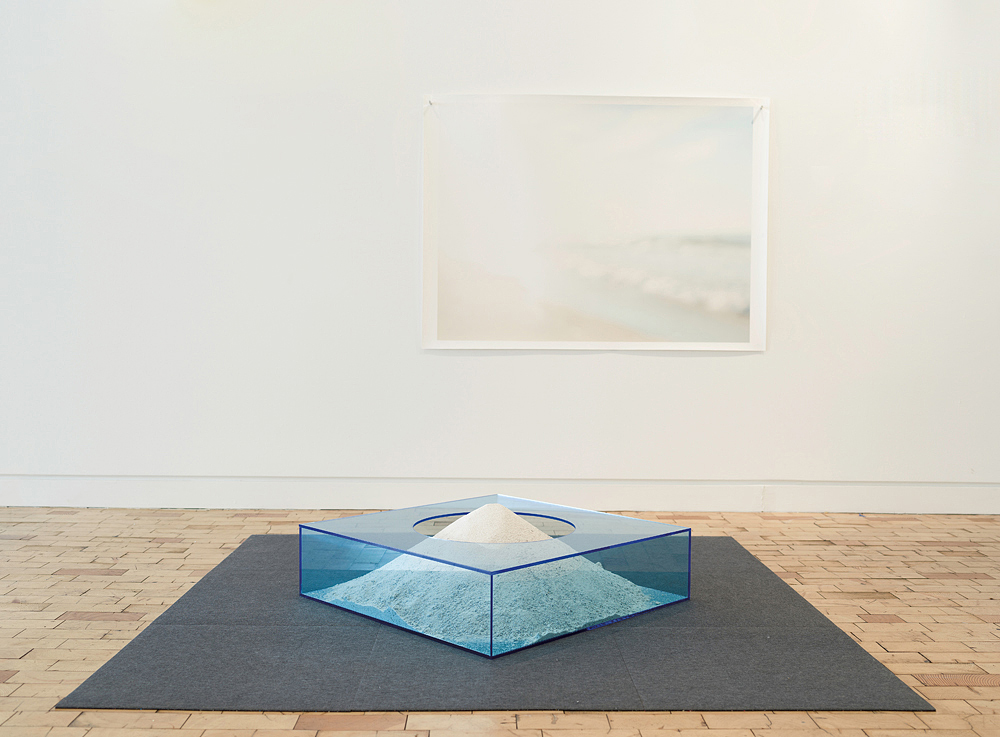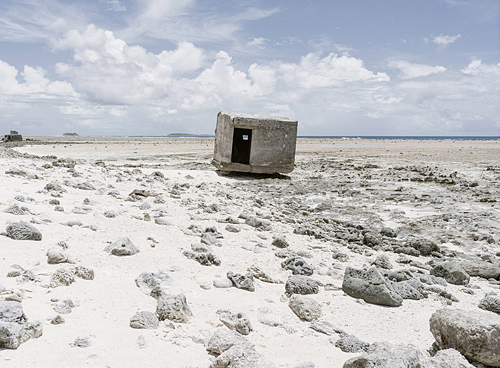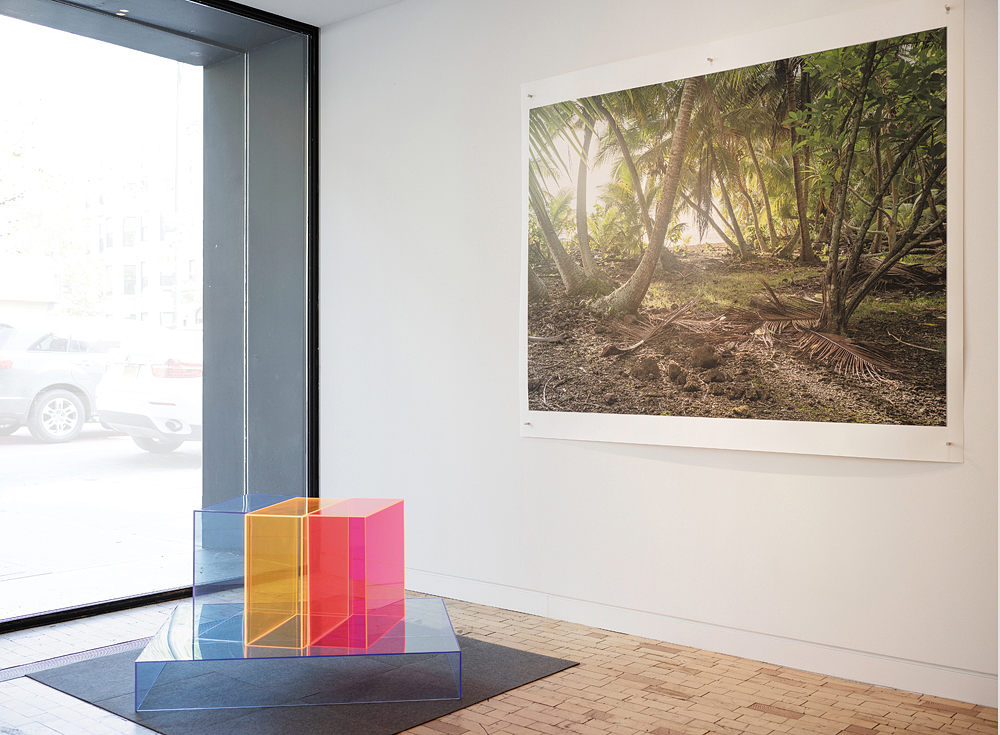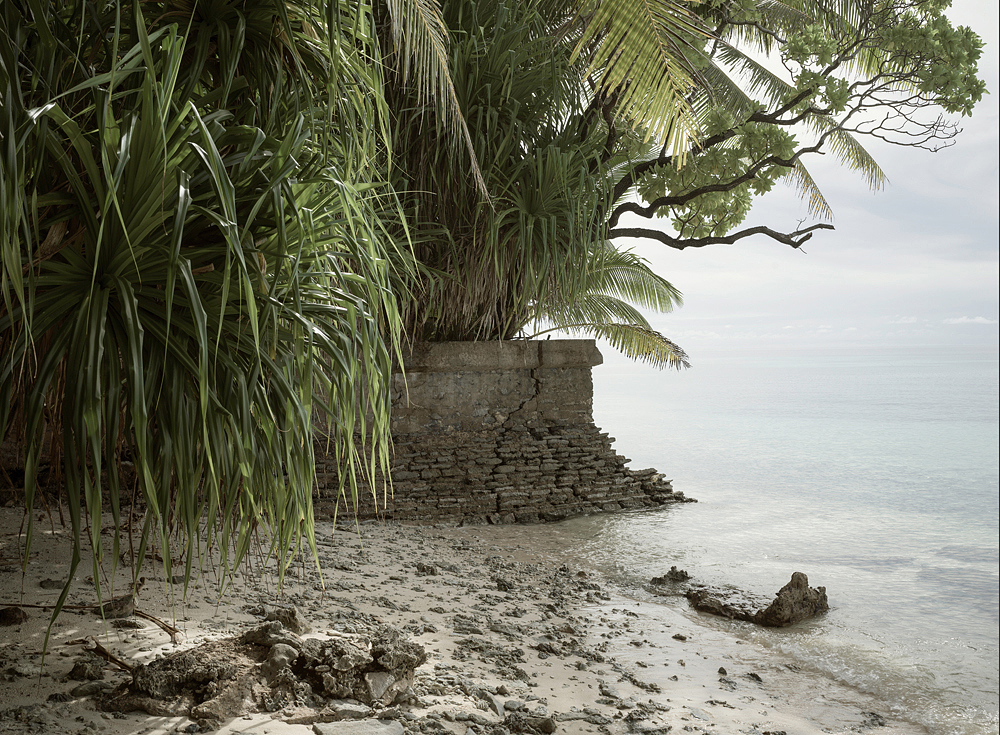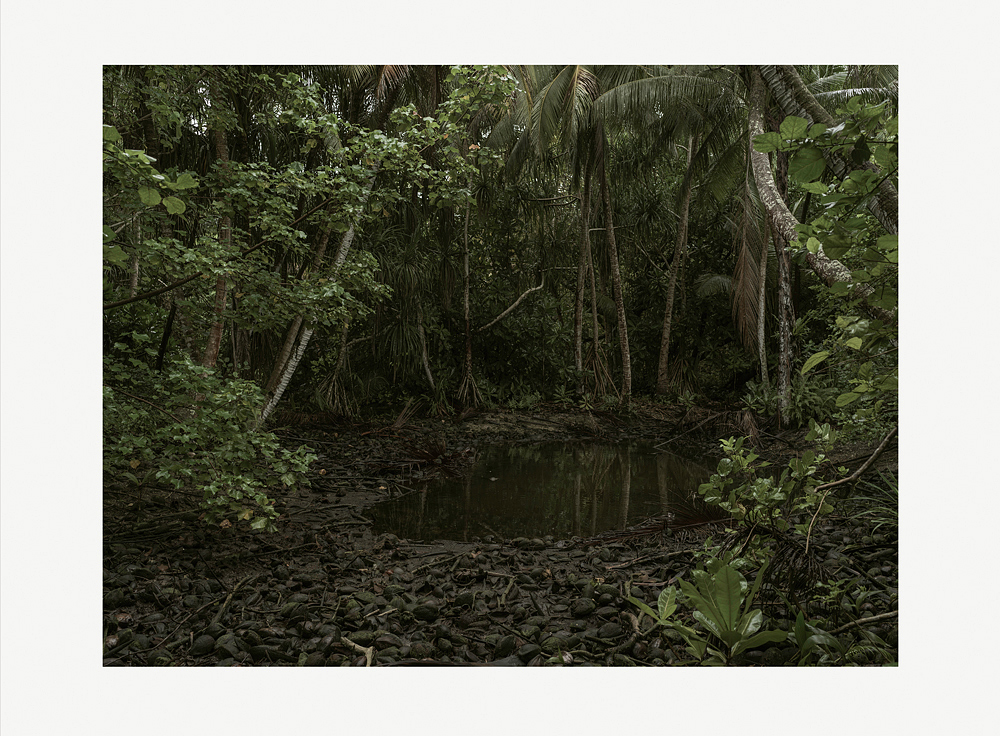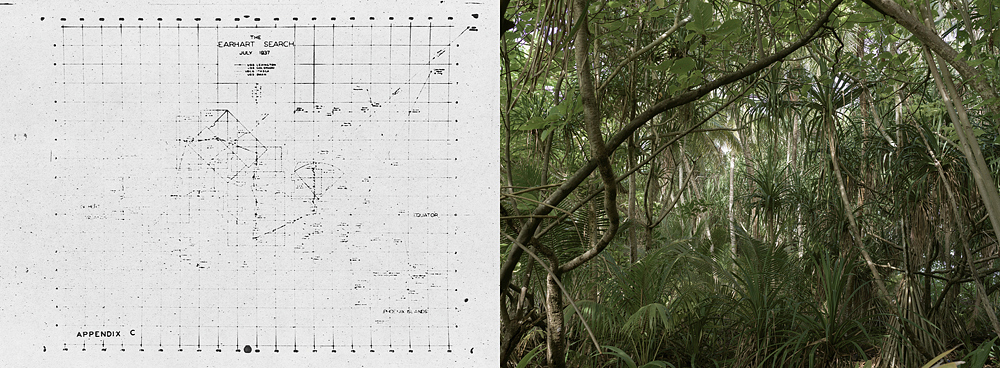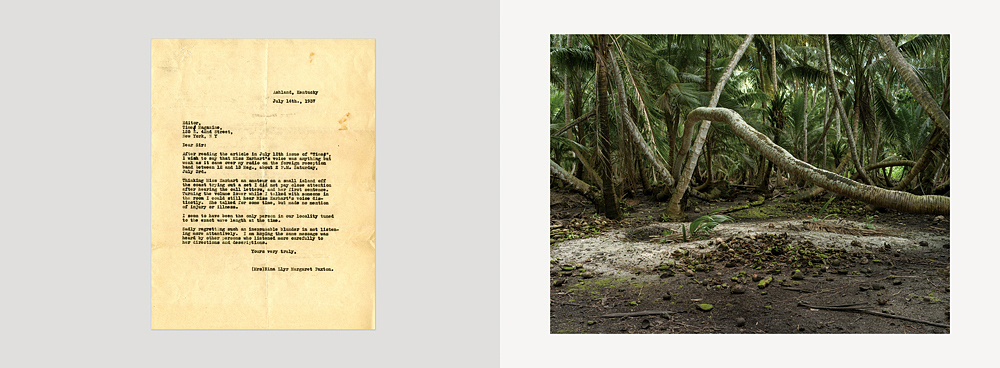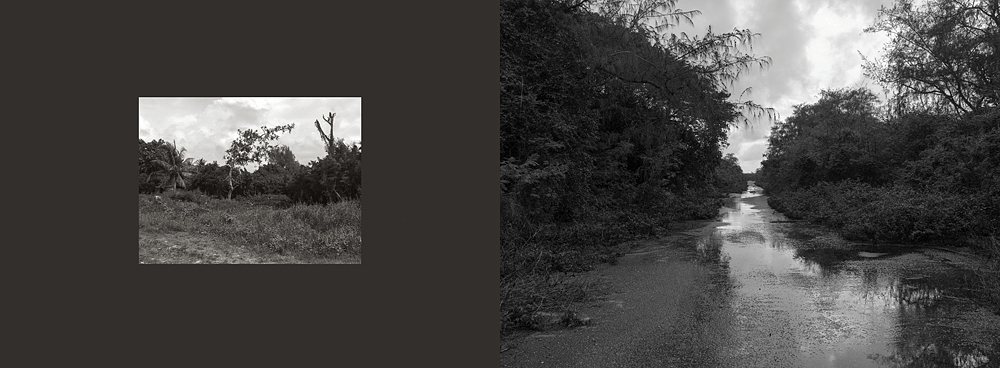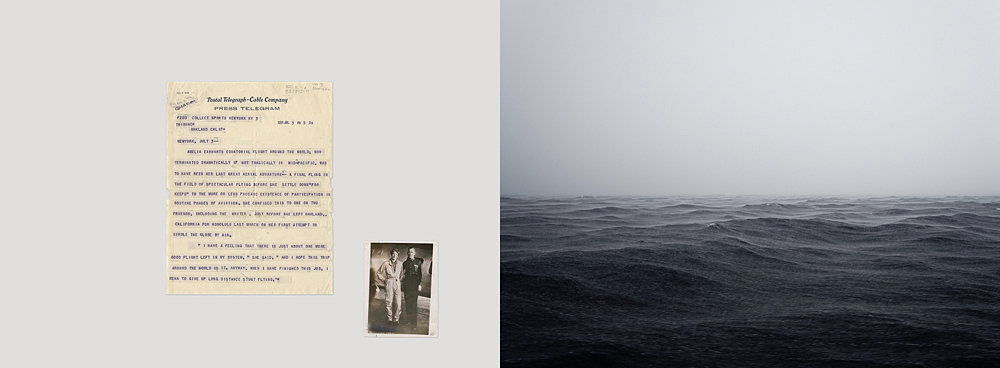Matthew Arnold: Storytellers
Recorded history and photography. While the terms aren’t exactly synonymous there is great degree of overlap in the way we discuss the two. At first glance both are often presumed objective documents of a time since passed. Substantial clues in a sea of otherwise disintegrating information. However, both mediums are rendered imperfect by the limitations of human perspective. A photograph of a river describes only it’s surface from one angle, at one time of day, for but a brief moment before that same river is changed irrevocably. A historical document or theory relates to a defined period of metered existence as seen through the eyes of the dominant cultural narrative. Neither medium is inherently fictitious but to refer to history or photography as strictly objective would be false. When referencing an event in which the outcome remains mysterious we get into even murkier territory regarding truth, but by proxy are awarded room to explore and engage in myth-making. This is where Los Angeles based photographer Matthew Arnold thrives. In his project, Longing For Amelia, Arnold utilizes photographed landscapes, archival text and imagery, and sculptural installation to explore the multiple theories surrounding the mysterious demise of the legendary pilot. Arnold’s layout and sequencing is utterly immersive and as I spent time with his work I found myself desperate for a forthright conclusion as to Earhart’s disappearance. However, it occurs to me as I write this that perhaps knowing Earhart’s end is irrelevant, when it is through wonder and research that she lives on.
Matthew Arnold is an American landscape photographer whose work strives to connect the specificity and significance of history with the topography of the land on which the history is shaped. His work has been exhibited and promoted widely across the United States and around the world in galleries and museums. His previous project was published in 2014 as a monograph entitled, Topography Is Fate—North African Battlefields of World War II, by the German publisher, Kehrer Verlag, Heidelberg. It includes a foreword written by Hilary Roberts, the Research Curator of Photography at the Imperial War Museums in Britain, along with an essay by Natalie Zelt, the co-author and co-curator of War/Photography: Images of Armed Conflict and Its Aftermath. Arnold was recently named a 2020 Critical Mass Top 50 Photographer by Photolucida. In 2021 Arnold will have his first major solo exhibition of his Amelia Earhart project at the Turchin Center for the Arts at Appalachian State University. This past summer he was asked to jury the Earth Photo Prize for the Royal Geographical Society in London. In 2019 he had his second solo exhibition at Happy Lucky No.1 Gallery in New York City for a parallel project entitled Ghosts and the Longing for Amelia. Ghosts is a multimedia project born of a long period of introspection. The project created a new perspective on process, and a deeper understanding of how obstructions in the path of life can ultimately lead to a different and possibly more revelatory direction in the creative development of the artist. In April of 2018 Arnold exhibited Topography Is Fate as a solo exhibition at the Gravy Gallery in Philadelphia. Previous solo exhibitions of Topography Is Fate have taken place at both Happy Lucky No.1 Gallery in New York City as well as at the Metropolitan Gallery in Philadelphia (organized by The Center for Emerging Visual Artists where he was a Fellowship Finalist). In 2016 he was a finalist for the Renaissance Prize at the Getty Images Gallery in London. His work was exhibited at the Arsenale di Venezia, in Venice, Italy as part of the Premio Arte Laguna. It was also exhibited at the Museum of Modern Art, Guatemala, as part of the GuatePhoto Festival where he also gave an artist talk about his Topography Is Fate project. In 2015 his Topography Is Fate project was also included in an important exhibition entitled Permanent War: The Age Of Global Conflict at the Grossman Gallery at the Museum of Fine Arts in Boston. Awards and honors that he has won include being named a Museum of Fine Arts, Boston, Traveling Fellow in 2014. He was named a Top 50 Emerging Photographer of 2014 by LensCulture and was exhibited at the Valid Foto Gallery in Barcelona, Spain. He was also named a Photolucida, Critical Mass 2014, Top 50 Photographer and exhibited in Guatemala as part of Guatephoto Festival 2015. His project was a Shortlist Candidate for the Vevey International Photo Award in 2015. He was also a Visiting Lecturer at Columbia University, in New York City in 2015. Matthew Arnold recently moved to Los Angeles, California after having spent over twenty years in New York City.
Longing For Amelia – The Historical and Mythological Landscape
Just before dawn on July 2, 1937, Amelia Earhart and her navigator Fred Noonan took off from Lae, New Guinea in their heavily loaded Electra L-10E aircraft. The destination was Howland Island, a flat narrow bit of land, 6500 feet long and 1600 feet wide—intended to be used to land and refuel, in order to continue on to Hawaii. This was to be the third to the last of 32 legs of her heroic but ill-fated attempt to be the first woman to circumnavigate the globe by airplane. Unfortunately she disappeared. The last confirmed radio transmission came when Earhart and Noonan said they were nearly 200 miles from Howland. There was no further contact. Eighty-three years after Earhart’s disappearance, only theories remain, yet her legend survives in the many individuals still searching for evidence of what happened to her on that fateful day in 1937. What is it that keeps us so captivated with Earhart? Is it an admiration for her bold fearlessness as an aviator in an industry and era dominated by men? Is the mythology surrounding her disappearance so intriguing because she disappeared in such a remote and unknown environment to most westerners? Is it the undeniable romance of an almost archetypal tragedy—a 20th century Icarus? Or is it because it occurred under such extraordinary circumstances, only a few years prior to the beginning of the Second World War? With his new photographic project, Matthew Arnold will document the environs that play host to the many theories which attempt to resolve the mystery of Amelia Earhart’s disappearance.The work presented here is from the first stage of Arnold’s project— a five-week expedition to the outer-reaches of the Mariana and Marshall Islands, photographing the seascapes and landscapes specific to the “Japanese Capture” theory. It is a theory which involves a forced landing in fortified Japanese territory followed by capture, imprisonment, and possible execution at the hands of their Imperial Navy. This expedition is the culmination of over a year’s worth of research, fundraising, and planning. While this may only be the beginning stage, the idea is to present each stage as its own entity so as to give weight to each theory of Earhart’s demise. The complete breadth of this project will involve travel to multiple parts of the Central and South Pacific, photographing related seascapes and landscapes of these remote regions. The Phoenix Islands, as an example, hold multiple theories to Earhart’s disappearance, including both the “Nikumaroro Theory,” and the “Orona Theory” where she is believed to have succumbed to the elements after landing on these deserted islands. In Papua New Guinea he will photograph both the “New Britain Island” and “Buka Island” theories, that suggest she crashed while attempting to return to New Guinea.In photographing these remote regions, along with the incorporation of many historical ephemera, Arnold will give visual detail to each of the theories surrounding Earhart’s disappearance. The images will illustrate his notion of both the historical and mythological landscape surrounding the hypotheses of an historic heroine’s unknown fate in a distant land.
I’m curious about your evolution photographically. Has the intersection of landscape and history always rested at the center of your work? If not, where did your interest lie before?
It hasn’t. It began with my previous project Topography Is Fate—North African Battlefields of World War II. Previously I had been photographing landscapes that were personal and peaceful with a project entitled Quiet Isolation. I am still creating work for Quiet Isolation but have yet to exhibit it. Although no longer my primary focus, I return to it regularly. It is ongoing and I use it to help focus myself in my day to day life and during my travels outside of the main projects that draw me far from home. It is almost wholly personal and created in parallel to the “historical landscape” projects while at the same time in direct communication with them.
The “historical landscape” projects were a turning point in my artistic path and were clear once I stepped onto the sacred ground of that first project. There is one specific moment when I realized everything was different with my work, when I pressed the shutter and knew things were going to change. I was standing on the edge of a deep wadi on the Kassarine Pass battlefield in Tunisia looking down into this dry riverbed in absolute awe. The wind was blowing the smaller bits of sand against my face as the tufts of desert scrub grasses waved. The clouds were a mixture of dark grey and white, billowing and blowing by quickly, dropping rain and letting in blue sky intermittently as they passed. The historian on the project and our fixer had stayed back at the truck, as they would often do, to allow me to have my time alone with the landscape. And so I had this moment alone. I looked down at my feet and noticed a piece of shrapnel. I picked it up and put it in my pocket. I then climbed down about 100 feet into the wadi and began to photograph everything around me. I couldn’t stop shooting. There was a photograph everywhere I turned. I paused to look down around me again and found a rifle cartridge. I stood up from picking it up and at that moment I knew I had found the work that I was going to create for the rest of my life. To this day there is nothing more inspiring to me than creating work that connects the significance of history with the topography of the land.
That project was the beginning of the historical landscape work and was the catalyst to continue in the vein of this type of work.
What was the spark that led to Longing For Amelia? What did the pre production phase of this project look like?
The spark was a newspaper article about a newly posited theory regarding Amelia Earhart’s disappearance and the possibility of finally determining what had happened to Earhart in July of 1937. I was at the stage of publishing the Topography Is Fate work with Kehrer Verlag in Heidelberg, Germany and was looking forward to discovering my next project. I read the article and was stunned to learn about this new theory. After continued research I learned there were at least several other theories that carried as much weight and popularity. What drew me in further was the area of the world where the different theories were situated. The theories were based in areas of the Pacific rarely travelled and some which were, in fact, completely uninhabited. This intrigued me from the perspective of photographing places possibly never professionally photographed before, which mirrors my experience with Topography Is Fate except that instead of the dry desert landscapes of North Africa my Earhart project would reveal the lush,verdant jungle overgrown with palms, vines, and other dense foliage. I was drawn to this obvious contrast and the similarity in approach that these two historically-based projects would pose.
Like the other project the work requires a significant amount of research to make the project viable. As a novice initially to the subject matter, I first researched online to glean enough information to make myself feel informed enough to contact various people instrumental to the completion of the project. When ready I reached out to both professional and amateur historians who were most deeply steeped in the different theories of her demise. These individuals have without a doubt been the most important resource I’ve had for this project. Their insight into and connection to the theories, I feel, is unparalleled as they have dedicated countless hours, days, and sometimes years to their research. For them, it is very much a heartfelt connection to Earhart’s legacy. Their knowledge has been instrumental in helping me understand the history, science, and detail of each of the theories.
The first phase of this project—the “Japanese Capture” theory is centered in the Marshall and Northern Mariana Islands—meant reaching out to Dick Spink—a high school teacher and business owner from Bow, Washington. His interest in the Earhart disappearance began after a business trip to the Marshall Islands where he heard the many accounts by local Marshallese of Earhart’s landing and final demise at the hands of the Japanese Imperial Navy. We spent hours on the phone discussing the theory and my ideas for the project. He offered to work with his friends in the Marshalls to assist me in organizing an expedition to the islands that were important to the theory. I also requested that he accompany me on the expedition so that I would be documenting the exact sites that are key to the theory. The other fascinating aspect to the project would be the opportunity to document the Japanese infrastructure still remaining from their military build-up prior to World War II. Because of Earhart’s possible capture and execution at the hands of the Japanese military this would become an important part of this phase of the project. This also is a significant parallel to the previous project about World War II.
Beyond a selection of photographs this project also contains sculpture installations and archival materials. Why did a multimedia presentation feel necessary for this work? What was your relationship to sculpture prior to this project?
With the Topography Is Fate project I wanted to include 3-D constructions or sculptural elements that would help to tell the story of the soldier on the ground in North Africa. I was remembering the dry cold and hot air of February, the sand whipping against my face, and something I did not expect at all—the deep, sticky, relentless mud that the soldiers described in great detail in their letters home made present and real. I wanted to include these multi-dimensional creations to more fully capture the textures and sensory feels of the elements that are not completely tangible through photographic form alone. Unfortunately, this was a determination I came to later in the project and thus, did not have the opportunity to present from an exhibition standpoint.
With Longing for Amelia I now had the foresight to think about it from the beginning. With so much science and mathematics used by the scientists and historians in determining the possible place of her disappearance, it seemed a perfect opportunity to add layers of information that photography alone could not describe. The diagrams and other elements of science of the process further inspired me to think in a three dimensional manner. With that said, if I hadn’t gone through the process of creating Topography of Fate I may not have arrived at this conclusion, so I am grateful for my past experience.
What were challenges you faced while traveling to the various photographed spaces?
With Topography Is Fate the challenges were distance, the vast unforgiving desert, and the political instability on the ground brought on by the Arab Spring taking place across North Africa. With each of the countries that I travelled I arrived at about a 8 to 10 months after the initial spark in that country. It was imperative at that stage to be very careful and to keep a low profile while working on the project.
With Longing for Amelia the biggest challenge was the great Pacific and what goes along with the remoteness of each of the islands. The Northern Mariana islands are easily accessible by commercial air travel so I traveled there first and then with Dick Spink, drove to the many sites related to the Earhart disappearance on the islands of Saipan and Tinian. With the Marshall Islands I could fly to the island capital Majoro but most of the outer islands that I needed to photograph were only accessible by boat. I worked with a local boat captain Ben Reimers that Spink knew to travel to each of those islands. We would spend about a week or so at a time at sea before we would need to return to Majuro to refuel and resupply. I did this for about 5 weeks traveling to many parts of the Marshall Islands.
What do you suppose the value of mystery and myth is in our modern world?
I think one of the key values of mystery and possibly myth is that it leads more people to learn a bit more about history. While some may know about something at a cursory level, I hope my work speaking to the mystery and myth will encourage others to delve a little deeper. One thing I do not do is tell the full story. I tell core elements to the story but do want the viewer to be inspired enough to read more about the history of Earhart and the islands associated with the various theories. There is so much more to learn.
I think myth and legend can tell us a lot about ourselves as a culture and society, what we hold dear and place on a pedestal for past and future generations. The story of Earhart is special in that it is of a person accomplishing feats never having been done before. The question is, would she have continued to be held in such high regard if, instead of being forever suspended in the romance of her feat, she was, in fact, rescued after having crashed thereby signaling her failure in the end to complete the flight? Would we consider her a failure or a maverick who had the courage and determination to try? And what does either say about our view on life?
There were, in fact, many who believed she was selfish for her acts of “ego” and played a part in placing the military in harm’s way during the extensive search after her disappearance, not to mention the waste of tax-payer money on such a “folly”. Can that be attributed to misogyny? Probably. Nevertheless, this could have been the storyline if she were found. Instead, we hold onto the story of a strong and brave woman outdoing what others had done before and doing things never done before. This is the story that I and I believe everyone wants to hold onto and is what inspires the many young girls (and boys) to bigger and better things.
A linear narrative runs throughout your sequenced images, words, archival materials, and sculptures. Given this presentation choice how would you like this work to be experienced by viewers? A gallery? A monograph?
When presented to curators and the like it is shown in somewhat of a linear book form. It is what makes the work digestible digitally in that setting. The book that I plan on developing will be similar, but may be slightly more abstract, which is how the museum exhibit at the Turchin Center of Visual Art at Appalachian State University is displayed. While there are “anchor walls” to help pull specific content together in a cohesive manner, a linear story is not being specifically told whether by time or place. The elements of content are blocked together in an interrelated way so as to connect the archival ephemera, scientific illustrations, and photographs together. This, I hope, continues the mystery of Earhart’s disappearance and does not define a “correct” theory.
There are a handful of theories surrounding Earhart’s fate that you reference in your statement. Which one do you ascribe to? Have you developed any of your own that aren’t listed?
Continuing from the previous answer, the work is not meant to define what is the correct theory of her disappearance. I want the work to give presence and place to the various theories in order to help tell the story of these distant lands utilizing this mystery of an amazing legend of the 20th Century.
Posts on Lenscratch may not be reproduced without the permission of the Lenscratch staff and the photographer.
Recommended
-
Paccarik Orue: El MuquiDecember 9th, 2025
-
Lauri Gaffin: Moving Still: A Cinematic Life Frame-by-FrameDecember 4th, 2025
-
Dani Tranchesi: Ordinary MiraclesNovember 30th, 2025
-
Art of Documentary Photography: Elliot RossOctober 30th, 2025
-
The Art of Documentary Photography: Carol GuzyOctober 29th, 2025

